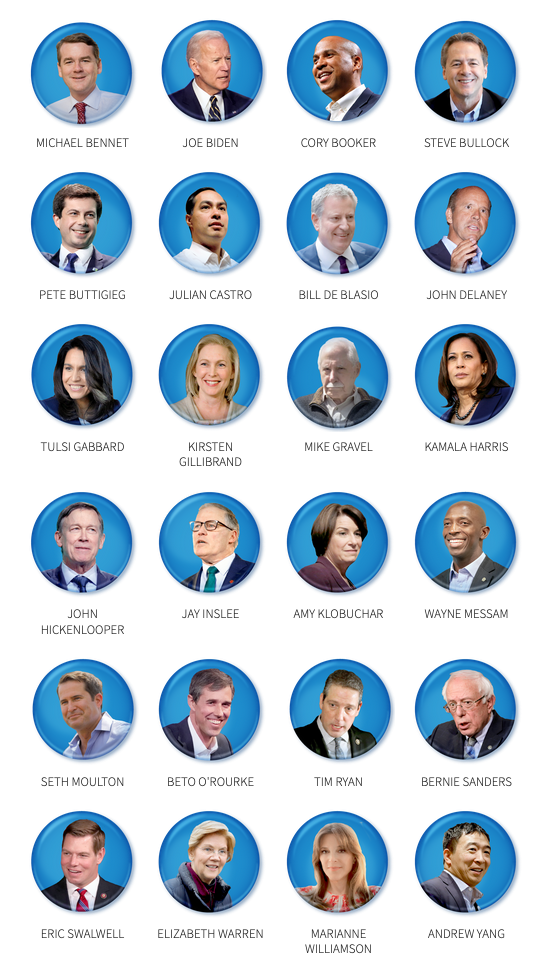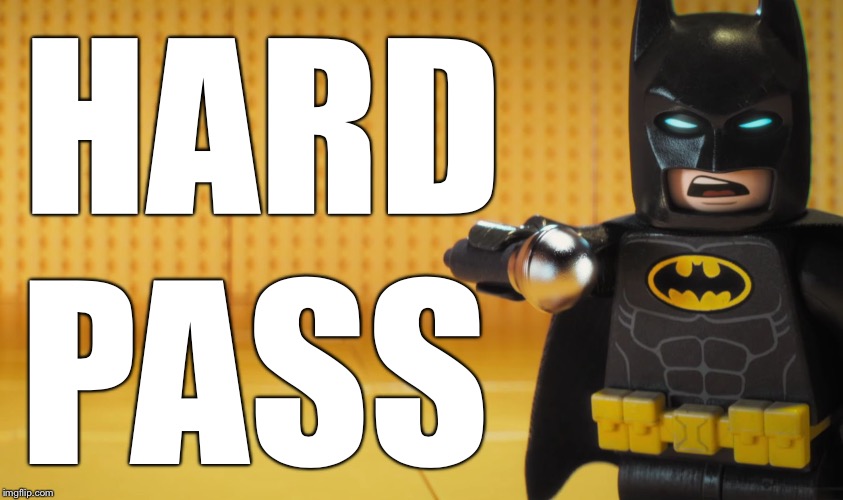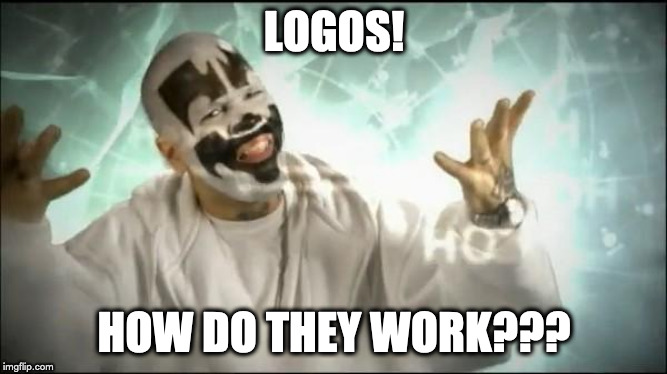De Blasio and Bullock are In, which means I’m now tracking 24 declared Democratic Presidential candidates. That’s enough to field both side of a football team, plus Mike Gravel as the coach and Beto O’Rourke as the towel boy. It’s the latest Democratic Presidential Clown Car Update!
Polls
Pundits, etc.
What if Donald Trump hasn’t driven Democrats insane, sending them into a spiral of self-defeating radicalism, but instead made them shockingly pragmatic?
Biden’s early strength suggests it may be the latter, that the reaction to Trump is so intense that it has crossed some sort of event horizon from fevered fantasy of his leaving office early via resignation or impeachment to a cold-eyed, win-at-any-cost practicality.
If this is true, one of the exogenous factors that could appreciably increase Trump’s odds of reelection — a zany Democratic nomination contest leading to a nominee much too far left for the American electorate — may not materialize.
Snip.
If hardly dispositive, Biden’s robust numbers at least suggest that this play is more likely than it seemed in the very early going, when candidates were stumbling over one another apologizing for sundry alleged offenses in the Woke Olympics.
If that’s not going to be the true dynamic of the race, I’m as surprised as anyone. What’s extraordinary, though, is that almost every Democratic candidate might have been misreading it as well, and chasing the wrong rabbit down the track.
Certainly, Bernie Sanders dominated the intellectual and policy debate in the wake of his 2016 run, driving other presidential candidates to embrace his signature proposals. And Alexandria Ocasio-Cortez is a genuine political star.
It’s only because the center of gravity of the party has clearly moved left that Biden, always a standard liberal, now sounds like a centrist when he calls himself an Obama-Biden Democrat.
But, as Harry Enten of CNN, among others, has been insisting for some time, the average Democrat is older, more moderate or conservative, and less likely to have a college degree than you’d guess from following Twitter or cable TV.
These voters were underserved by the rest of the field, and Biden is taking dead aim at them with the simple message that he can beat Trump.
Others suggest that the size of the field highlights vulnerabilities of the two candidates now topping the polls, former vice president Joe Biden and Sen. Bernie Sanders (I-Vt.). Biden has started strong, but it’s too early to judge his candidacy. Front-runners never coast to victory, and he will face adversity, whether self-inflicted or delivered by a rival who rises to the moment.
One risk for Democrats is that, with so many candidates and so many voices, side debates distract from core issues and unifying messages. The debate over reparations sparks passions within the Democratic base but is not an issue high on the list of most voters who will determine who is the next president. The same is even more true of the issue of whether violent felons, terrorists or sexual predators should be allowed to vote while in prison, a topic recently injected into the Democratic conversation by Sanders.
At least 10 states are planning to switch from a caucus to a primary in 2020. As things stand, just two states — Iowa and Nevada — have firm plans to caucus again. Two other 2016 caucus states — Maine and Wyoming — are still up in the air. Maine lawmakers may establish a government-run primary, in which case the Maine Democratic Party plans to move to a primary. And Wyoming Democrats are still ironing out some details.
“I think it’s also critical to understand, as I’ve been telling candidates who have come to see me,” she said last week, “you can run the best campaign, you can even become the nominee, and you can have the election stolen from you.”
One third of that statement is true — she was the nominee; two thirds are not. Hillary Clinton did not run the best campaign. Her campaign was a disaster. She was a disaster. She insulted half of the electorate by calling them “deplorables” even before the first vote was cast.
“So, part of our challenge is to understand what it will take to put together not only the popular vote, but the Electoral College,” she added.
That is good advice. It is also advice she should have given herself in 2016 when, capturing the popular vote, she lost the Electoral College to Trump.

Now on to the clown car itself:
A January poll by the Pew Research Center found that 58 percent of Republicans wanted their party to become more conservative. In contrast, 53 percent of Democrats wanted their party to become more moderate.
That raises the question of whether the party’s center of gravity lies less with vocal activists than with a quieter group of voters that is less likely to join Twitter or show up at campaign events. “His candidacy may be different,” says Biden’s campaign pollster John Anzalone, “But it is the one that is working.”
Feminist Jill Filipovic asks “Does Anyone Actually Want Joe Biden to Be President?” It’s yet another “Electability Sucks, Because White Male!” screed:
The Democratic Party of 2019 does not look much like Joe Biden. Women, African-American, Latino and Asian voters are all much more likely to say they support Democratic candidates than Republican ones. White voters, male voters and especially white male voters generally support Republicans.
Statistics on who votes Democratic also suggest that the Democratic Party is more diverse than the experts deciding who is electable.
Those assumptions about electability reflect entrenched biases more than political science, and have a dash of arrogance to boot. An electable candidate, the thinking goes, has to be authentic and broadly appealing. But authenticity itself is coded as white and male when it’s defined by white men.
“Shut up and eat your intersectionality, white patriarchal oppressor!”
According to Morning Consult data from the first quarter of 2019, Bullock is among the 15 most popular governors in the country, and one of the top Democrats to make the list (13 out of the top 15 most popular governors are Republicans; the other Democrat is Delaware governor John Carney). But that fact makes Bullock’s decision to run for president a bit more puzzling.
In a field of 23 candidates, where Biden continues to lead the pack by double digits in many polls, it’s hard to imagine the Montana governor will have an easy time making an impression on primary voters. But it’s much easier to imagine Bullock putting up a decent fight against Republican senator Steve Daines, who is up for re-election in 2020.
He launched his presidential campaign by coming out against free speech. 538 says that Bullock is talking about his plan to reach out to rural voters:
In a May 8 tweet, he said, “As the only Democrat to win statewide re-election in a Trump state in 2016, I know firsthand: we must reach out to rural voters.”
And this message might resonate. As we know from polls, many Democratic voters think it’s a very important consideration to nominate a candidate who can beat President Trump, and as a white man, Bullock may benefit from perceptions that he is “electable.” But he has empirical evidence for it, too: He has won three statewide elections in red, heavily rural Montana — one for attorney general and two for governor. In 2016, he won his second gubernatorial term with 50 percent of the vote, 15 points more than Democratic presidential candidate Hillary Clinton.
He’s all in on Iowa, and has an endorsement from Iowa’s attorney general Tom Miller.
The reason it is very unlikely that de Blasio will replicate the success of Donald Trump in the Democratic primaries is that he cannot offer any contrasts that matter. He isn’t entertaining, he’s tiresome. He isn’t charismatic, he’s unctuous. He talks like the president of a small liberal-arts college, spouting clichés plucked from a flier on an assistant professor of Peace Studies’ door. He seems convinced that the glassy expression on the faces of the students and faculty in the audience is awe, not a soul-numbing tedium that is a few desperate heartbeats away from resorting to self-harm just to feel something again.
De Blasio holds press conference at Trump Tower — and gets heckled. Come for the pro-Trump posters, stay for the “You suck!” chants. (Hat tip: Ann Althouse.)
At first, they just wanted Gravel to run so he could perform the same function he did in his longshot 2008 campaign – yell at the other candidates on stage and push them as far left as possible, especially on an anti-war foreign policy.
But at this point, nobody can rule anything out when it comes to election outcomes.
“We’re running to win, of course, but we don’t expect to win,” Oks told the Forward. “I don’t think Mike expects to become president – it would probably be a hitch in some of his plans.”
But earning enough donations and poll support to get him on the debate stage, he explained, would allow Gravel to “put forth criticism of war and the military industrial complex, and even domestic policy, that hasn’t been seen in many decades, even more radical than Bernie.”
Pushing the Democrats even further left? There’s no way that could possibly backfire…
One of those theories is beloved by self-styled centrists, and has served as a way to gate-keep against more liberal candidates. It argues that Americans are ideological moderates who punish political parties for nominating candidates too far to the left or right.
The other is beloved by leftists, and has served as a cudgel against more centrist candidates. It holds that there’s a vast working-class majority out there for any candidate willing to slough off the Democratic Party’s turn to corporatism, free trade, and identity politics and recapture the economic populism that made the New Deal Democrats dominant for a generation.

For all the praise The New Republic is heaping on her opioid crisis plan, it just sounds like more federal government money airdrops.
Yet one of Oprah’s star guests, Marianne Williamson, is running—and has beat out several conventional politicians, including Massachusetts congressman Seth Moulton and Colorado senator Michael Bennet, to qualify for the first D.N.C.-sponsored debate. That Williamson has qualified is irritating to some of her opponents—not because of who she is, but because of the rules that could make her one of the 20 contenders appearing on the prime-time stage: candidates need to score at least one percent in three certified polls or collect donations from 65,000 different people.
She gets a profile in New York:
Marianne Williamson deserves some serious attention, and not just because she’s written four books that hit number one on the New York Times bestseller list. At a time when the leftward drift of the Democratic Party is regularly in the news, she is by any measure the most rigorously progressive candidate in the field of 23. That she wraps her progressivism in a syncretic spirituality instead of socialist materialism may even be an advantage for a politician in this God-haunted country of ours.
Pick an issue, and odds are Williamson is going to out-Bernie Bernie and out-Warren Warren. She’s for Medicare For All, unsurprisingly, but she’s also for heavy investments in preventive medicine and nutritional education, and a pretty heavy regulatory arm on those she feels are poisoning our bodies, including those who produce “high-fructose corn syrup and hydrogenated fats.” So far as I can tell, she’s the only candidate committed to reducing national stress levels, too.
And one at The Hill: “Those who say who can and cannot win now are the same people who were telling us that Hillary Clinton was a shoo-in three years ago.”
Over and over again when I ask people who identify as members of “the Yang Gang” what attracted them to Yang, they cite Silicon Valley’s preferred solution to our economic woes: universal basic income (UBI) or, as he calls it, “the Freedom Dividend.” Yang argues that technology is going to eat up millions of jobs over the coming decade, wiping out everything from retail workers to truckers. “How many of you have seen the self-service kiosk at McDonald’s or another fast food restaurant?” Yang asks. “You kind of like them. I kind of like them too.” The only solution to this inevitability, Yang argues, is giving every American, beginning at age 18, $1,000 a month. He’d fund it by upping taxes on technology companies.
Yang has translated his unlikely background and platform into something of a cult following, centered around men under the age of 40. The idea that anyone except the occasional oddball would thrill to carrying signs with the word “MATH” emblazoned on them — which stands for Make America Think Harder — may feel like a stretch in the United States, where an anti-intellectual streak is writ large, and our current president is prone to saying such things as, “I love the poorly educated.” But when people attending the rally talk about UBI, it feels more personal. “It makes a lot of sense, because a lot of Americans are struggling,” said Keegan Steinke, 24, a canvasser for a solar company. “It provides a safety net for everyone, and it doesn’t provide these perverse incentives like, ‘Okay, I made this much, I might lose these benefits,’ ” said Elliott Ribner, 32, a software engineer.
Politico asks: “Is Andrew Yang for Real?”
Viewed from a great distance, Yang’s candidacy has a lot in common with the two political comets that streaked across the 2016 presidential campaign: Donald Trump on the right and Bernie Sanders on the left. Yang runs essentially the same playbook: embracing economic grievance, hammering the tech giants and other darlings of the “new economy,” selling his case directly to the working American. Since he launched his campaign in November 2017, he has been retailing a vision of America in which educated, entitled elites have rigged the system and hoovered money away from middle America and toward the coasts, giving little in return. With no prior political experience or prominent backers, Yang is nonetheless gaining a peculiar traction, including some true believers who want him to be president and others who are mostly just intrigued.
Unlike Trump and Sanders, however, Yang, 44, comes precisely from the same corporate, tech-soaked world he is trying to attack. Educated at Phillips Exeter Academy, he made his money prepping students to get into MBA programs and, in recent years, has spent months at a time living in Silicon Valley. He was once a successful startup CEO and head of a group that trains budding entrepreneurs, but in the wake of 2016 presidential election Yang soured on an industry that wreaths itself in promises of prosperity and transformation; he rejects the conventional policy wisdom—popular on the left and the right—that out-of-work Americans should retrain for jobs in tech. And in a Democratic Party reveling in its diversity, the Taiwanese-American candidate says he worries most about how displaced white men will react to their declining fortunes—a stance that has, strangely, won him some fans from the “alt-right.“
